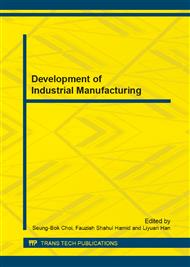p.287
p.292
p.297
p.301
p.305
p.311
p.316
p.320
p.325
An Equipment of Separating Fish Flesh from Steaks Efficiently
Abstract:
An equipment for separating fish flesh from steaks was designed. The law of separation with the device was investigated, which lay a solid foundation for further amplification experiment. The optimum separation conditions are: heating the fish steaks at 121°C for 40min, pumping the liquid to the separation vessel in tangential direction, and the flow velocity was 35L /min. The fish steaks were separated to pure fish flesh, fishbone and fish soup efficiently under the above conditions. There are many advantages of the equipment, including the simple structure, the efficient separation effect and the high quality of the separation products. Additionally, this equipment can also be applied to other livestock and poultry products processing, which is worthy for further research and application.
Info:
Periodical:
Pages:
305-310
Citation:
Online since:
February 2014
Authors:
Keywords:
Price:
Сopyright:
© 2014 Trans Tech Publications Ltd. All Rights Reserved
Share:
Citation:


